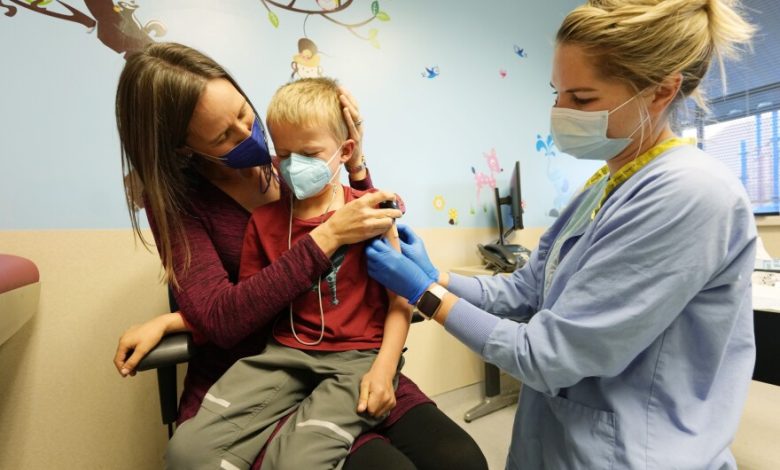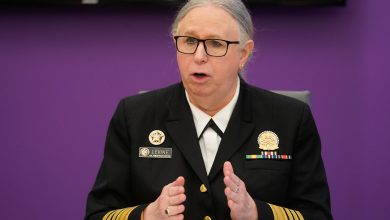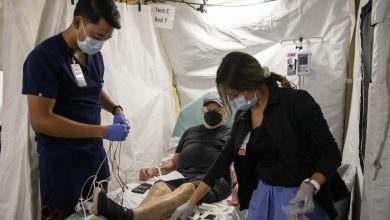Vaccine Questions Rise in Colorado: What You Need to Know Before the Federal Panel Meets

The phrase “Vaccine Questions Rise in Colorado” has moved from local chatter to headlines — and for good reason. Over the past several months, federal vaccine policy has shifted in ways that have prompted confusion, political debate, and practical changes at the state level. Colorado — a state with a history of strong public-health programs but also a vocal “medical freedom” segment — finds itself at the intersection of those tensions. This article explains what’s changing, why it matters to Coloradans, what state leaders are doing, and how individuals and families can make practical decisions in the coming weeks.
What’s happening at the federal level — and why Colorado is paying attention
In 2025, the federal Advisory Committee on Immunization Practices (ACIP) — the panel whose guidance long helped shape Centers for Disease Control and Prevention (CDC) vaccine recommendations — underwent a substantial shake-up. New members appointed by the Department of Health and Human Services have prompted the panel to reconsider and in some cases revise longstanding recommendations for vaccines including COVID-19, MMRV (measles-mumps-rubella-varicella combo), and hepatitis B. Those moves have included eliminating a broad federal recommendation for COVID-19 vaccination in favor of an “individual decision” framework and changing other age- and program-based guidance — actions that ripple through how states, insurers, clinics, and parents manage access and expectations.
Why this matters: federal guidance has historically been the default reference point for state public-health programs, school entry rules, and many insurance coverage decisions. When the federal message becomes less prescriptive or more fragmented, states must decide whether to follow, adapt, or create their own policies — and that choice creates both friction and opportunity.
How the changes have amplified vaccine questions in Colorado
Colorado’s public health leaders and lawmakers watched the federal developments closely — and many anticipated confusion. In response to evolving federal guidance and to reduce potential barriers to vaccination, Colorado’s governor and public-health authorities issued measures to protect vaccine access and clarify local policy. For example, the governor’s office and the Colorado Department of Public Health and Environment (CDPHE) put out public orders and standing authority for pharmacists to administer COVID-19 vaccines without individual prescriptions, specifically to prevent disruptions if federal authorizations narrowed access. These state-level steps were explicitly framed as ways to make it easier for Coloradans to get immunized despite uncertainty at the federal level.
That state-level response has itself raised questions among the public: which guidance should people follow, will insurance cover vaccines if federal recommendations change, and could children’s vaccine schedules or school requirements be affected? Those are the exact questions that have driven local media coverage and the new covid Vaccine Rise in Colorado to spread across news outlets and community conversations.
What Colorado changed (and why)
Colorado has taken a few practical steps that matter day-to-day:
- Standing orders for vaccine administration: State health officials issued standing orders to permit pharmacists to give COVID-19 vaccines without requiring a patient-specific prescription. This reduces administrative friction and preserves community access points such as pharmacies and pop-up clinics.
- Legislative and statutory safeguards: Earlier in 2025, Colorado approved laws that give the state more flexibility to rely on clinical and professional society guidance (not just CDC guidance) when aligning vaccine policy to state realities. That was intended to insulate state programs from federal policy swings.
- Public messaging and reminders: The state has continued outreach (including reminders to parents about routine childhood immunizations) to prevent declines in coverage that could lead to outbreaks of measles or other vaccine-preventable diseases. Public-health leaders stress that maintaining routine immunization rates is critical even as federal recommendations shift.
Why some people are unsettled — and the role of trust
Two forces have amplified public unease:
- Rapid policy turnover at the federal level. When longstanding guidance is reassessed in a compressed timeframe, it can look like backtracking, even when the reasons are complex. That invites questions about competence, motives, and safety.
- Misinformation and polarized messaging. Vaccine debates have become politically charged, and social media can amplify partial or erroneous claims quickly. Public-health leaders say that maintaining clear, consistent communication and relying on high-quality evidence are the best defenses against misinformation.
In Colorado, those factors mix with local political culture: a mix of strong public-health institutions and a civic streak that prizes individual choice. That combination explains why Vaccine Questions Rise in Colorado has legs — people are trying to reconcile trust in institutions with a desire for personal agency.
Practical guidance for families and individuals in Colorado
If you’re worried or just want to be prepared, here’s a short checklist to help you navigate the uncertainty:
- Talk to your primary care provider or pediatrician. They can explain the latest guidance, how it applies to your family, and whether any specific vaccine is recommended for health reasons.
- Check current state guidance and standing orders. Colorado’s public-health department and governor’s press releases are the authoritative sources for what’s allowed locally (for example, pharmacist administration without prescriptions).
- Confirm insurance coverage before getting a vaccine if cost is a concern. Ask your insurer whether specific vaccines will be covered under current policy, especially if federal recommendations have shifted.
- Keep routine child vaccinations up to date. The risk of measles, whooping cough, and other vaccine-preventable diseases remains real; maintaining high routine-immunization rates protects individuals and communities.
- Use trusted information sources. State health departments, major hospital systems, and local public-health departments are better sources than unmoderated social channels for clinical guidance.
The insurance and access angle: why policy wording matters
A practical but often overlooked issue is the legal and administrative language that governs coverage. Many insurance plans tie coverage to federal recommendations or to FDA approvals/authorizations. If a federal advisory panel changes a recommendation from “routine for all” to “individual decision,” some insurers may review their coverage rules, which could lead to differences in co-pays or reimbursement pathways. Colorado’s proactive standing orders and statutory measures are partly designed to blunt that risk, but families should confirm coverage for specific vaccines if they rely on insurance.
What public-health leaders say (and what to watch for)
Public-health officials in Colorado have stressed three priorities: maintain access to vaccines, preserve routine immunization programs for children, and communicate clearly. The governor’s office framed state measures as necessary to avoid confusion and unnecessary hurdles for people who want vaccine protection this fall and winter. Watch for these signals in coming weeks:
- Any updates from the ACIP or FDA that alter age-group recommendations or authorization language for COVID-19 or other vaccines.
- State-level announcements from CDPHE that clarify how Colorado will interpret federal changes for school-year requirements, vaccine clinics, and insurance interactions.
- Local health department plans for outreach and clinics, especially in communities with lower routine coverage rates.
Public-health leaders also warn that a transition period — when federal guidance is shifting but state practice must continue — is precisely when misinformation can fill information vacuums. That’s why consistent, evidence-based messaging from trusted local providers is key.
How reporters and policymakers should cover this going forward
Covering vaccine policy responsibly means:
- Naming clearly what changed and what did not (e.g., a recommendation vs. an authorization vs. regulatory approval).
- Explaining practical impacts (e.g., needing a prescription, changes to insurance coverage, or clinic protocols).
- Highlighting local steps — like Colorado’s standing orders — so readers know what applies in their daily lives.
- Avoiding alarmist language when evidence does not support it; likewise, not downplaying real administrative consequences.
Local journalism and public-health communication have a critical role to play making complex policy understandable, which helps reduce the exact confusion that sent Vaccine Questions Rise in Colorado trending in the first place.
Final takeaways for Coloradans
- Yes, vaccine-related questions have risen in Colorado, and that’s a predictable reaction to significant federal advisory changes. The phrase Vaccine Questions Rise in Colorado captures.
- Colorado has acted to preserve access. Standing orders and state guidance aim to prevent narrow federal language from blocking vaccines in the community. If you need a vaccine, Colorado’s policy currently supports accessible options like pharmacy administration without a prescription.
- Talk to your clinician and confirm insurance. For personal decisions and questions about cost, your healthcare provider and insurer are the most actionable resources.
- Keep routine vaccinations up to date. Even amid debate, the health risks from preventable diseases remain immediate — and routine childhood immunizations protect both individuals and communities.
Watch for official updates. Federal committee votes, FDA authorizations, and Colorado Department of Public Health and Environment announcements are the primary sources to monitor for concrete changes that matter to you.




